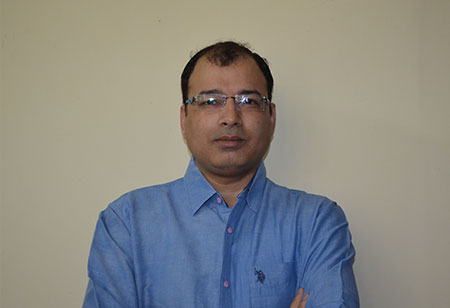Standardization of Healthcare Sectors in India
By Bipin Joshi, Head, Systems & IT, Rockland Hospital

Bipin Joshi, Head, Systems & IT, Rockland Hospital
Indian Healthcare industry is evolving and growing at a steady rate. Healthcare is currently one of the largest sectors whether we talk in terms of revenue or employment. The growth of the Indian Healthcare sector can be attributed to multiple reasons like rising incomes, greater health awareness, lifestyle diseases, increased access to insurance growth of private sector and initiatives taken by the Government of India to promote healthcare. Investments in private sector has seen substantial jump in last couple of years in which some major foreign players have invested in large Indian healthcare firms. Government on its side has started many schemes to make healthcare accessible and affordable to all. Indian healthcare delivery system is categorized into two major components - public and private. The Government, i.e. public healthcare system comprises limited secondary and tertiary care institutions in key cities and focuses on providing basic healthcare facilities in the form of primary healthcare centers (PHCs) in rural areas. The private sector provides majority of secondary, tertiary and quaternary care institutions with a major concentration in metros, tier I and tier II cities.
Despite of the above progress made we still are far behind when it comes to providing basic healthcare facilities to all. Our health indicators continue to lag Maternal Mortality Rate, Child Mortality Rate and non-communicable disease burden has increased substantially. The requirements of beds, doctors and hospitals are all on the lower side as per the standards set by World Health Organization. Till 2014, we have had 0.9 beds per 1000 patients and 0.7 physicians per 1000 patients which are abysmal. Due to this huge gap in infrastructure and inadequate workforce, there is a compound to the problems of the patients. In rural areas of India situation is grimmer only 2 percent doctors live where 68 percent of the total population reside. A new study on access to healthcare facilities shows that rural areas remain significantly underdeveloped in terms of health infrastructure: about half the people in India and over three-fifths of those who live in rural areas have to travel beyond 5 km to reach a healthcare center. In contrast, the urban centers have numerous private hospitals and clinics which provide quality healthcare. These centers have better doctors, access to preventive medicine, and quality clinics. But with increase in urban population density these resources will be insufficient to cater the future demands. Government has started NRHM but the lack of funding is going to hinder the goal of achieving the universal health coverage.
To address most of the healthcare delivery issues use of appropriate technology can really help in achieving the goal of universal health coverage. With increase in technology adoption at all levels taking medical facilities to the patients is becoming a reality. Telemedicine is one such medium through which healthcare can be made available at rural and remote area of the country. Telemedicine has been already cited as being particularly helpful in rural areas, where the shortage of healthcare providers had led to a lack of accessibility to both basic healthcare and specialty care. Through telemedicine, patients get access to healthcare faster, which is a leading factor in improved patient engagement and better outcomes.
M-health is one more concept which is catching up fast with 684.1 million mobile users & 204.1 million smart phone users this one medium which can be game changer the way healthcare is delivered. Mobile devices have good penetration even in rural areas where other sophisticated infrastructure components do not exist. This growing ubiquity of mobile phones is a central element in the promise of mobile technologies for healthcare sector in India. There are so many apps coming up which provide option to take medical consult via email, call and video call. Of all the new startup coming up 30% are for Healthcare as everybody sees a huge opportunity and a big market in the healthcare delivery space.
The overall Indian healthcare market today is worth US$ 100 billion and is expected to grow to US$ 280 billion by 2020, a Compound Annual Growth Rate (CAGR) of 22.9 per cent. Healthcare delivery, which includes hospitals, nursing homes, diagnostics centers, and pharmaceuticals, constitutes 65 per cent of the overall market. Government and private players have great opportunity due to this. Government needs to formulate new inclusive policies and implement the ongoing one effectively. The Healthcare sector needs have to be increased to at least 2.5 percent of GDP. Government should also come up with some plans to standardize and regulate new methods by which healthcare can be delivered through use of technology as right now no such guidelines exist. Government of India intends to introduce a uniform system for maintenance of Electronic Medical Records / Electronic Health Records (EMR / EHR) by the Hospitals and healthcare providers in the country. This needs to implemented and enforced at the earliest as too much time already have been lost on this. At the same time, the government should focus on establishing more medical colleges and training institutes to provide the requisite doctors, dentists, nurses and paramedics. The government also should invest in preventive and social medicine by promoting health education and preventive health-care concepts.


